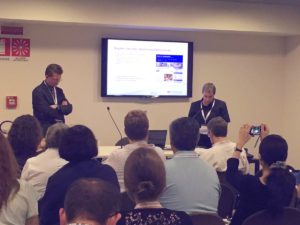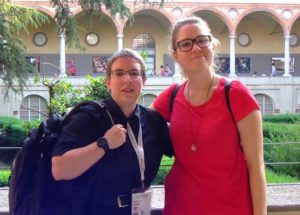As I was sorting my notes from the CIDOC conference in Milano1 I discovered that, unlike my notes from other conferences, it was hard to separate the sessions from one another and to separate my personal conversations with colleagues from the presentations and discussions at the conference. So, I gave up on summarizing the different sessions I attended and took a look at the big picture. Was there a leading theme, something that played a part in all sessions and discussions? Well, yes, there was, and, a little bit to my surprise it wasn’t something like “we need to contextualize our data more” or “we need better standards” or “we need to do more marketing for our profession”. The leading theme – at least for me – was: “Good documentation starts with people doing it and is only good if it is useful for people.”

Take the presentation of Alexandre Matos about implementing standards in some museums in São Paulo: the translation of the SPECTRUM standard into Portuguese, the localization of it for the local needs and the implementation of some of the standards in three museums was made possible by people doing it – included, and maybe the most important of all, by people in the State Secretary who were convinced that having standards in museum documentation is a good and necessary thing. How many good projects towards professionalization in our sector are blocked because officials don’t deem them necessary?
It’s the same with other projects like developing a combined and enhanced textile thesaurus out of the diverse ones that already exist at the HTW in Berlin, or the “International Image Interoperability Framework (IIIF)” (http://iiif.io/) developed in Yale to support the work of researchers, or the experiences from automating processes in a museum library in Zambia. It all comes down to people who take the initiative to improve existing processes or to develop new ones – and not simply for the joy of doing it, but with their audiences and colleagues in mind.

A project that immediately grabbed my attention and fascinated me was the “Encyclopaedia of Museum Practice” (http://cidoc-dswg.org/ ) that was initialized by Jonathan Whitson-Cloud. It is a project aimed at developing a multilingual wiki on museum terminology so everybody working in the field all over the world can look up terms and understand what they mean. We had a fruitful discussion about the project and some hands-on tries on the software. I shared some of the experiences we had at Registrar Trek with working multilingual. Again, this project is highly dependent on people just taking a heart and start adding terms and providing translations, so here I want to encourage you, the reader, to create a user account and start filling the “Encyclopaedia” with content!

It was great fun, thank you Milan and maybe we meet each other while working on the “Encyclopaedia”?
Best wishes
Angela
This post is also available in Polish, translated by Marcin Mondzelewski, the translation originally appeared on the blog of the Polish Museum Registrar Association http://inwentaryzatorzy.blogspot.de/.
- You might like to take a look at the hashtag #CIDOC2016 on twitter to find what people found noteworthy while attending the conference. ↩
Greetings! Very helpful advice within this post! It is the little changes which will make the greatest changes. Thanks for sharing!
I have faught for over 30 years about documentation in databases. Far too often I have found documentation such as “a table” or “porcelain company products”. Databases are the heart of any institution. Far to often Boards and Archivists fail to realize the importance of documentation and lose the history of their community or institution.
Highly recommended. But, I am sure that all of you have considered this: it can be used terminologies besides the documents by themselves: Tags as “significative evidences” of those connections between two or more objects (I mean terminology gathered in thesauri).
I usually use Tags (naming them “Referencias” in Spanish) assigned to each object, as part of its technical data. So, any used software can make “match” with the objects marked with the same Tag, showing on screen, and in a printed list, those results.
These Tags will gather those terminologies as “clues” matching the objects, its documentation and its significances as “evidences”.
I completed too a kind of “Directory of Tags” for each collection of some museums. By this way, the people and investigators can consult it and find the specific object (with its documentation) depending on the own interest.
This is a mission for Curators, Registrars, Collections Managers, Documentalists and Educators in the museum, applying resources as those you are referring. Thank you.
I also took it for granted that connections between artefacts and archival material would be documented on the database. Sure it takes longer but is essential.